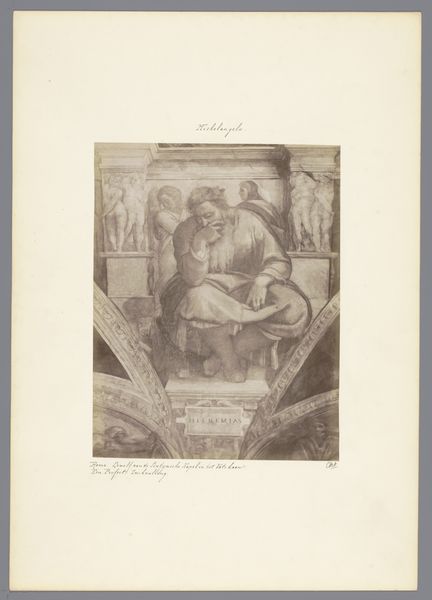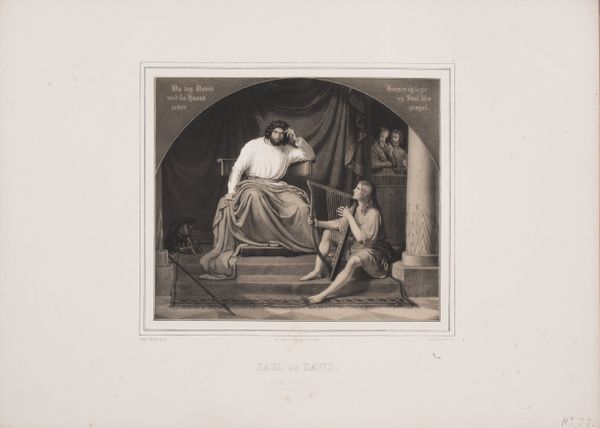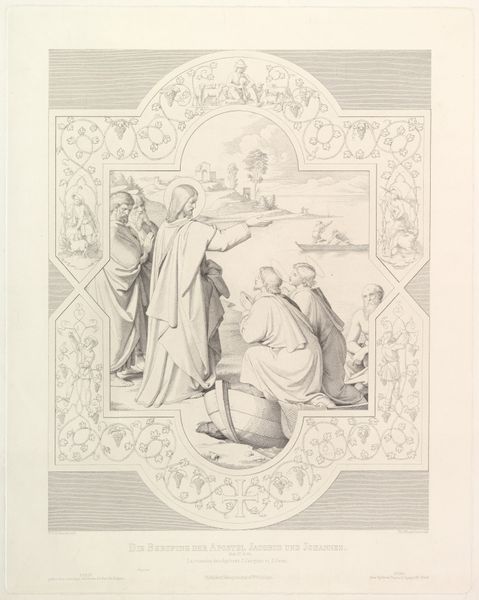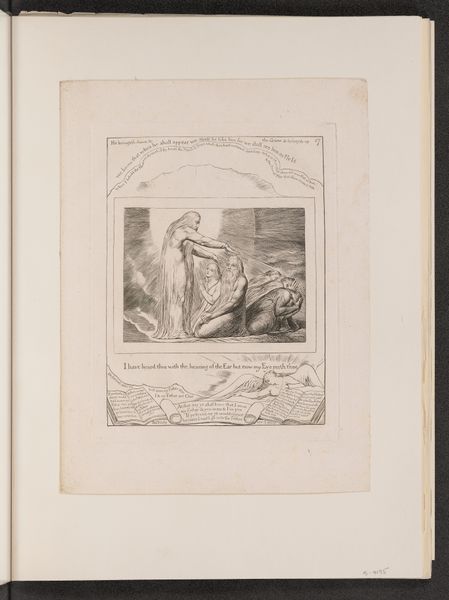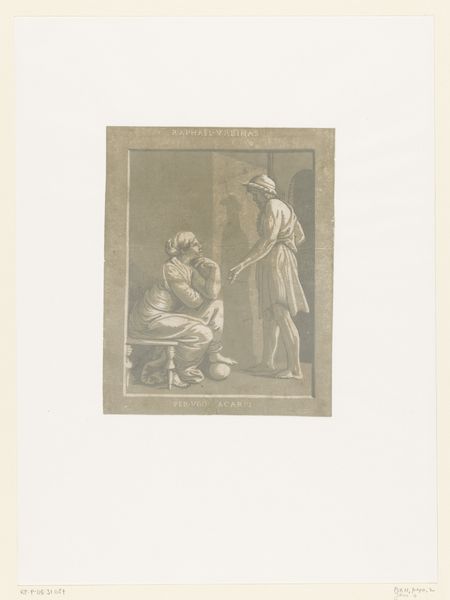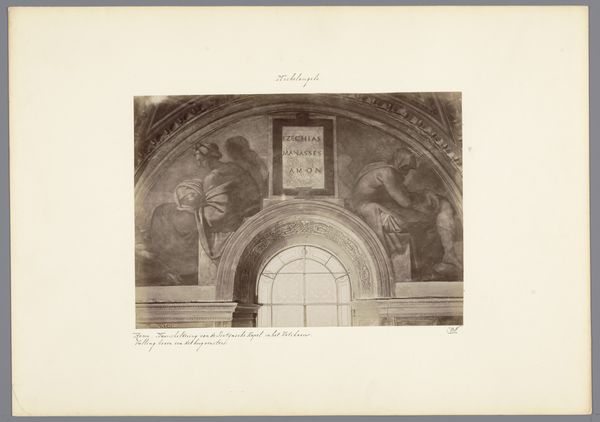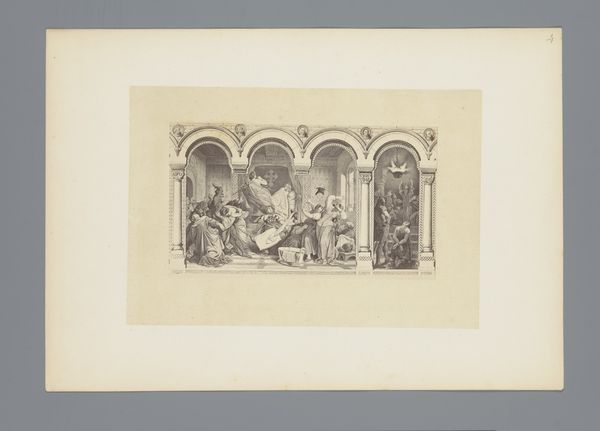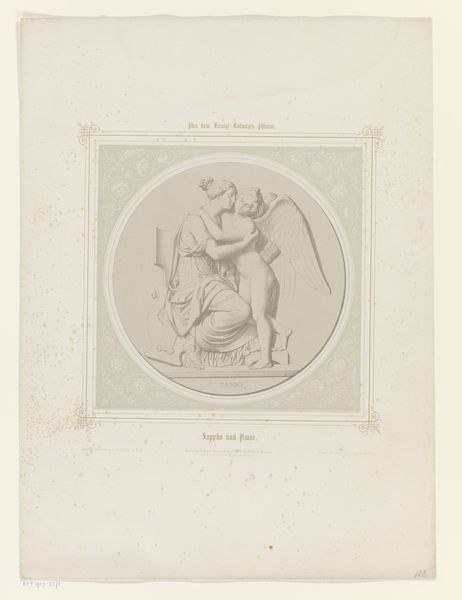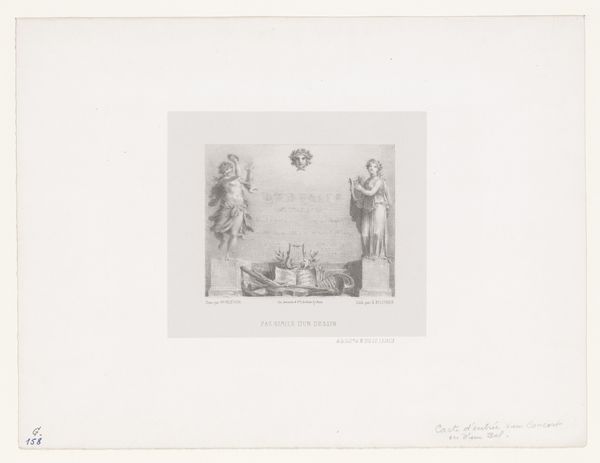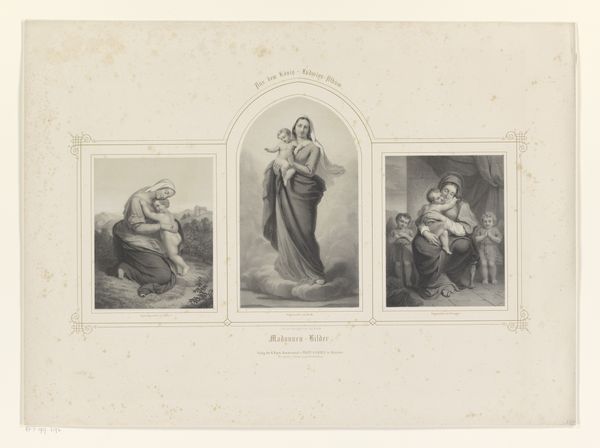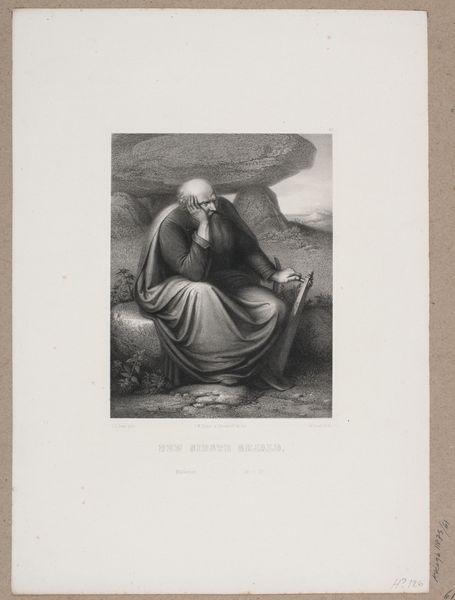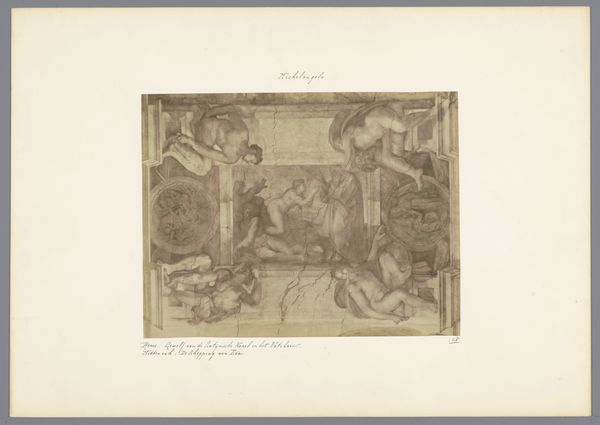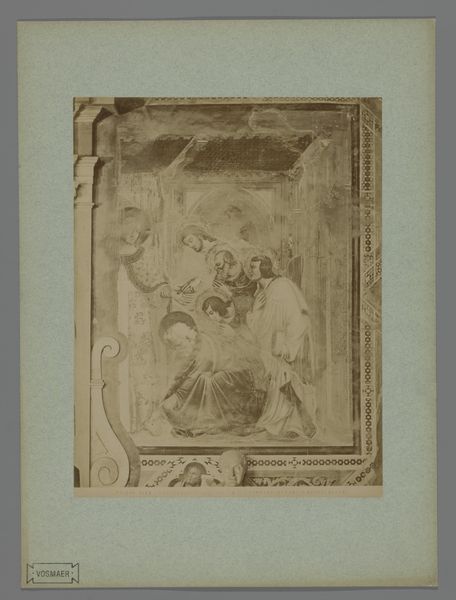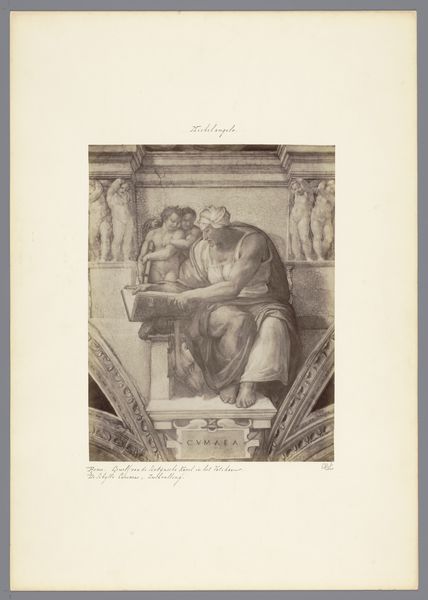
Fotoreproductie van een detail van het fresco door Michelangelo in de Sixtijnse Kapel in Rome, voorstellend een voorouder van het Heiland c. 1875 - 1900
0:00
0:00
anonymous
Rijksmuseum
print, fresco, photography
#
portrait
# print
#
fresco
#
photography
#
history-painting
#
italian-renaissance
Dimensions: height 189 mm, width 244 mm
Copyright: Rijks Museum: Open Domain
This is a photographic reproduction of a fresco detail in the Sistine Chapel in Rome, showing an ancestor of Christ, made by an anonymous photographer. Michelangelo Buonarroti originally painted the frescos in the early 16th century using the ‘buon fresco’ technique, applying pigments to wet plaster, a labor-intensive and time-sensitive process. The image captures the texture and tonality of the original fresco, emphasizing the tangible qualities of the materials and the physical effort involved in its creation. You can almost feel the weight of the plaster, and imagine Michelangelo on the scaffolding, constantly racing against the clock before the plaster dried. This detail is a small segment of a much larger project, a true feat of endurance. Photography allowed for the wide dissemination of Michelangelo’s art, democratizing access to the Vatican's treasures. However, it also alters the perception of the frescoes. What do we lose when we see a photograph of a fresco, rather than the real thing? The transformation of material into an image always changes its meaning.
Comments
No comments
Be the first to comment and join the conversation on the ultimate creative platform.
